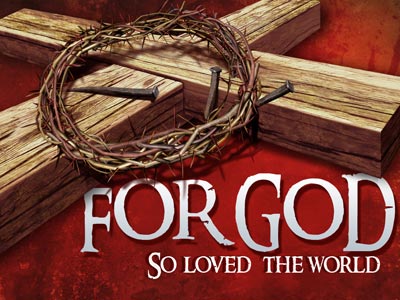-
Good Friday
Contributed by Garth Wehrfritz- Hanson on Nov 28, 2017 (message contributor)
Summary: The image of the cross and skull bones compared and contrasted with Jesus on the cross.
Good Friday
Text: Luke 23:33
Place: St. Peter, Medicine Hat
Date: March 29, 2013
The procession ended at the “Place of the Skull”. Seems appropriate for what was going to happen there. Did you know that some crosses bear the sign of the skull and cross bones? The symbol of the skull and cross bones is also associated with Adam’s skull because through Adam and Eve death came into this world.
When I was younger we tended to see the symbol of the skull and cross bones on toxic and dangerous chemicals or places. We were taught that this was a symbol of danger and that we needed to treat the contents with care or to stay away from sites marked with the symbol. We also tended to think of this symbol as being associated with pirate ships.
Things sure have changed in regards to this symbol of the skull and cross bones. It has become ornamental. You see it on caps, tee shirts, skateboards, motorbikes, leather jackets, as jewellery; and I have even seen a purse decorated with little symbols of the skull and cross bones. Maybe there is something dangerous in that purse, who can tell?
So why has this symbol become so popular and splashed all over the place? Is it a way to say that the person sporting it is dangerous? Or does it reflect a playing with death and that which is harmful because one feels tough or invincible. Is it a fascination with the macabre? Is it just a matter of following the latest fad?
Sometimes those who sport the symbol of the skull and cross bones want to communicate a sense of power, toughness and defiance. So they defy those who would challenge them and in some sense they may be sending a threatening message of injury and death. They use the latent threat of death and the fear it creates in order to exercise freedom without restrictions or accountability. They use the threat of death as a means to their own ends.
In a way those who use this symbol in this way are a more vigorous expression of us all. We too want to do what we want without being curbed by others or even by God. There is a rebel at work in most of us one way or another, we want our way. Yet this approach to life, to relationships of all kinds, leads to alienation, injury and death. We all live under the threat of death and the toxicity of our sin.
How shall we get out from under the power of the skull and cross bones caused by the sin in our lives?
At the place of the skull Jesus heads straight into the heart of the matter by facing injury and death, taking them on, literally in his own body. Christ takes them on even when they do their worst in causing harm and death and leave his body a bloodied corpse on the cross. He takes on the symbol of the skull and cross bones that hangs over our lives; even as we are under the curse and the fear created by Adam and Eve’s choice that leads to death. So we too carry the image of the skull of Adam. Even as some people tattoo the image of the skull on their skin, the power of sin is marked on every human heart. It is there and active even though we may not wish it to be there.
Though Jesus is sinless he takes on that mark for us. He takes on the death to which our sin leads as well as the harm and brokenness, the guilt and shame. He takes it on, he takes it all on for you and me.
At the place of the skull Jesus enters into our sin and our death. The threat and fear of death does not stop him. He comes under the sign of the skull and cross bones and his life in this world is ended. Death has done its full damage to him, he has drunk the full measure of the toxic cup of our sin and he has expired.
I remember a rancher telling me about one of his favourite horses. One day he went outside and found the horse down and in obvious distress. So he ran in to call the local veterinary. When he described the symptoms to the vet who told him that it sounded like the horse had been poisoned. Had the horse been near a certain product? the vet asked. Then the rancher remembered that he had given that chemical to his cattle in their water supply. The horse had obviously drank of the same water. Although it didn’t cause problems for the cattle, it did poison the horse. The rancher lived sufficiently far away for the vet that he didn’t think he could get there in time to save the horse. So with a great heaviness of heart the rancher went back outside to see his best horse die.

 Sermon Central
Sermon Central



